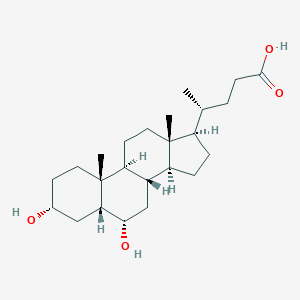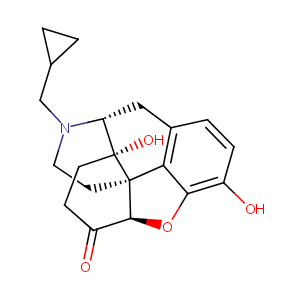Details of the Drug Combination
General Information of Drug Combination (ID: DC33KYA)
| Drug Combination Name |
Hyodeoxycholic acid Naltrexone
|
|||||||||||||||||
|---|---|---|---|---|---|---|---|---|---|---|---|---|---|---|---|---|---|---|
| Indication |
|
|||||||||||||||||
| Component Drugs | Hyodeoxycholic acid | Naltrexone | ||||||||||||||||
| N.A. | Small molecular drug | |||||||||||||||||

|

|
|||||||||||||||||
| 2D MOL | 2D MOL | |||||||||||||||||
| 3D MOL | 3D MOL | |||||||||||||||||
| High-throughput Screening Result | Testing Cell Line: KBM-7 | |||||||||||||||||
| Zero Interaction Potency (ZIP) Score: 1.72 | ||||||||||||||||||
| Bliss Independence Score: 1.72 | ||||||||||||||||||
| Loewe Additivity Score: 4.76 | ||||||||||||||||||
| LHighest Single Agent (HSA) Score: 4.76 | ||||||||||||||||||
Molecular Interaction Atlas of This Drug Combination
| Molecular Interaction Atlas (MIA) | |||||||||||||||||||||||||||||||||||||||||||||||||||||||||||||||||||||||
|---|---|---|---|---|---|---|---|---|---|---|---|---|---|---|---|---|---|---|---|---|---|---|---|---|---|---|---|---|---|---|---|---|---|---|---|---|---|---|---|---|---|---|---|---|---|---|---|---|---|---|---|---|---|---|---|---|---|---|---|---|---|---|---|---|---|---|---|---|---|---|---|
|
Hyodeoxycholic acid Interacts with 2 DME Molecule(s)
|
|||||||||||||||||||||||||||||||||||||||||||||||||||||||||||||||||||||||
| Indication(s) of Naltrexone |
|
||||||||||||||||||||||||||||||||||||||||||||||||||||||||||||||||||||||
|
Naltrexone Interacts with 1 DTT Molecule(s)
|
|||||||||||||||||||||||||||||||||||||||||||||||||||||||||||||||||||||||
|
Naltrexone Interacts with 1 DME Molecule(s)
|
|||||||||||||||||||||||||||||||||||||||||||||||||||||||||||||||||||||||
|
Naltrexone Interacts with 9 DOT Molecule(s)
|
|||||||||||||||||||||||||||||||||||||||||||||||||||||||||||||||||||||||
References
